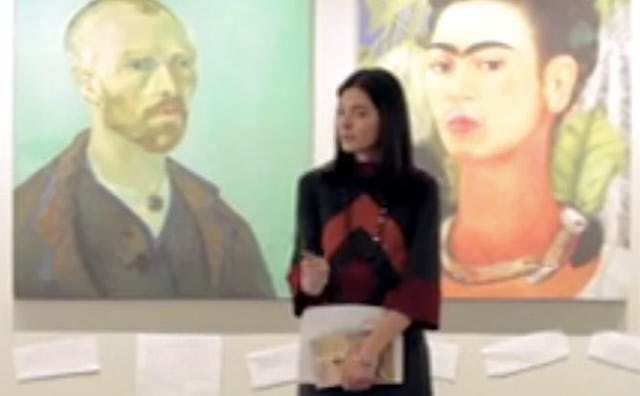What If More Schools Looked Like Art Galleries Instead of Prisons?

The current education imperative to frequently administer standardized tests, and to spend valuable classroom time drilling for those tests, has meant that other programs have had to fall by the wayside. Like, for example, arts education. But a network of public charter schools in New York City, Ascend Learning, is trying to change that—one painting and one play at a time.
Sara Neufeld, writing for the Atlantic, reports on one Ascend school in Brownsville, Brooklyn, one of the city’s poorest neighborhoods. The CEO of Ascend, Steven F. Wilson, created the arts-focused schools as way of more fully preparing students not only for college—he notes that children from schools in neighborhoods in Brownsville get to college and then suffer from culture shock—but also to more fully prepare them for life: Arts education encourage creativity, a valuable skill in today’s job market.
RELATED: Learn The Definition Of Process Art, Plus Ways To Encourage It At Home
Arts funding tends to get low priority in a high-stakes testing environment as schools generally allocate time and resources to drilling kids on reading and math. But the new Common Core standards emphasize the arts—in fact, they mention the arts about 75 times, the Atlantic reports: “Students are expected to analyze paintings, music, and theater and create their own works of art.”
So even as some schools cut arts funding, others, like Ascend, are prioritizing it. CEO Steven F. Wilson’s vision starts with the facility, creating schools that are designed to look like galleries: The walls are hung with high-quality replicas of works of art. The curriculum incorporates arts and reading into every subject; the fifth-graders read and perform The Tempest as part of a unit on slavery, colonialism, and family struggles. They use Pieter Bruegel’s “Landscape With The Fall of Icarus” to learn the myth of Icarus and Daedalus. The seventh-graders prepare for standardized tests by reading Emily Dickinson and Henry David Thoreau, rather than using passages designed specially to mimic standardized reading tests.
Wilson hopes to demonstrate that this kind of rigorous arts education is possible throughout all public schools, but Ascend apportions a larger share of its budget to facilities than may be possible in other public schools. It has to make other trade-offs to compensate, such as larger class sizes.
Nonetheless, any sort of redesign that makes schools look less like prisons—many schools in New York City have bars on the windows—will certainly please parents, and at the very least produce a more pleasant learning environment. And as pressure mounts from parents and teachers to jettison, or at least reduce, standardized exams, perhaps even more schools will start prioritizing The Tempest over test prep.
This article was originally published on